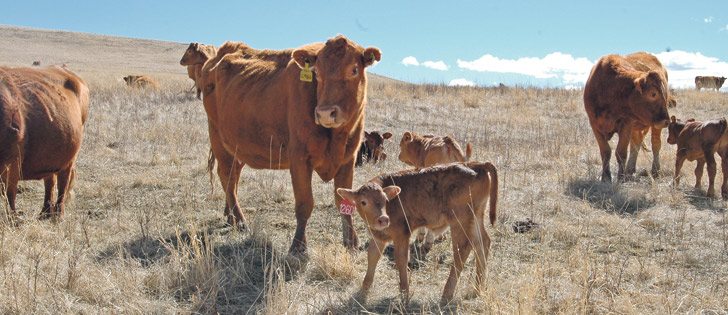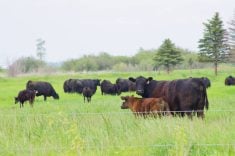Johne’s disease is considered by some to be a disease that primarily affects dairy cattle. While the disease is not as common in beef cattle, it can represent a significant problem in herds dealing with the infection.
Johne’s disease was first de-scribed in 1826 and is a bacterial infection that results in a syndrome of chronic diarrhea that eventually leads to weight loss and wasting and death.
The disease, sometimes known as Paratuberculosis, is primarily seen in mature cows. The bacterium that causes it is referred to as MAP (Mycobacterium avium paratuberculosis).
Read Also

Canada told trade crisis solutions in its hands
Canadians and Canadian exporters need to accept that the old rules of trade are over, and open access to the U.S. market may also be over, says the chief financial correspondent for CTV News.
A survey by the United States Department of Agriculture revealed that more than 90 percent of beef producers were either unaware of Johne’s disease or recognized the disease by name only.
The MAP bacterium that causes Johne’s disease has a thick waxy cell wall that makes it very resistant in the environment. It can survive in soil or feces for more than a year and transmission occurs primarily when animals ingest infected manure or milk.
The bacteria are also secreted in milk and colostrum from infected cows. Transmission of the disease is age-dependent and older animals require a much higher exposure to become infected.
Most animals are infected as young calves at less than six months of age, but it is a very slow progressive disease, so clinical symptoms may not appear until animals are four or five years old.
By that time, the infected animals are already shedding the organism into the environment. The infection causes a gradual thickening of the intestines of the animals making them less able to absorb nutrients.
The primary clinical sign is weight loss and chronic watery diarrhea. The affected animals often remain bright and alert and continue to eat, despite continuing to gradually lose weight.
Clinical symptoms often initially occur shortly after calving in many cases.
The major limitation to dealing with Johne’s disease is the imperfect diagnostic tests available. There are three primary options available for testing cattle to see if they are infected with the MAP bacterium.
A blood sample can be taken to see if the animal has antibodies to the MAP bacterium, a fecal sample can be taken and a PCR test (polymerase chain reaction) can be used to identify the MAP bacteria in the feces, or a culture of the feces can be taken and incubated on special media to see if the MAP bacteria is present.
Because the bacteria are slow growing, the culture method can take several months before results are known and so it is less commonly used because of the expense involved.
All three test methods suffer from the same problem. They all do a poor job of identifying cattle that are in the early stages of incubating the disease. This makes control difficult because we cannot rely on test results to find all of the positive animals so that we can remove them from the herd. It results in disease-positive animals being left in the herd and allows the infection to continue to spread.
In addition, the antibody test and the PCR test can have a low rate of false positives. This means that we might cull some animals that we believe are infected with the MAP bacterium that are really not affected.
This may not be a major problem in some circumstances, but if we are dealing with purebred animals or valuable genetics, it might cause producers to unnecessarily cull animals.
Regardless of the testing protocol, biosecurity principles must be in place to limit the spread of the infection. This is based on two main principles:
- Minimize the exposure of susceptible calves to the feces of infected cattle.
- Reduce the environmental contamination by eliminating animals that shed MAP.
Ultimately, in dairy and beef herds we cannot rely solely on a test and cull strategy to eliminate this disease. In dairy herds, one of the important control strategies is to remove the newborn calf from the mother immediately at birth so that it is less likely to be infected. This is obviously not possible to do in the cow-calf herd.
However, we do have strategies that may provide benefits. The basic principles of minimizing fecal exposure for young calves in cow-calf herds that we use for control of calf scours are essentially the same management principles for the control of MAP infections.
Using systems such as the Sandhills calving system or the Lacombe system, spreading out the calving environment and minimizing fecal contamination are important aspects of MAP control.
Testing and culling alone will prove to be a wasted effort if attempts are not made to minimize spread through biosecurity and management.
Producers who suspect Johne’s disease in their herds should consult a veterinarian for the best testing strategy. It may not always be cost-effective to test the whole herd in commercial herds with low levels of infection.
Instituting basic biosecurity principles to minimize calf exposure to adult feces is also essential.
John Campbell is head of Large Animal Clinical Sciences at the University of Saskatchewan’s Western College of Veterinary Medicine.















